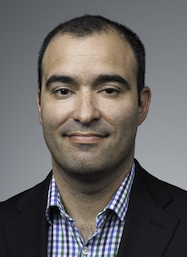Tutorials
There will be two tutorials at CAMSAP 2019:
Beyond Massive MIMO – New Concepts and Signal Processing
Massive MIMO (multiple-input multiple-output) is no longer a “wild” or “promising” concept for future cellular networks—in 2019 it became a reality, with 64-antenna base stations (BSs) being commercially deployed in many countries. The development of the Massive MIMO communication technology is now in the hands of the product departments of companies such as Ericsson, Huawei, Nokia, etc. A large number of communications, signal processing, and optimization algorithms have been developed over the last ten years and it remains to be seen which ones will work well in practice. Before the product developers have had the chance to try out the existing algorithms, there is limited need for further algorithmic development and capacity analysis in the scientific literature. It is, therefore, time for MIMO and mmWave communication researchers to change focus towards new applications of antenna arrays. If 5G becomes a commercial success, massive digitally controllable antenna arrays will be deployed “everywhere”. What else can we use this spatial resolution for and how will the antenna deployment evolve beyond 5G? This tutorial starts by giving a brief overview of Massive MIMO and how the many open problems that were identified five years ago have now been solved. Bearing in mind that Massive MIMO was considered science fiction just ten years ago, we now need to target new theoretical but practically challenging problems to develop the next multiple antenna technology. In the remainder of the tutorial, we outline four such forward-looking research directions: Extremely large aperture arrays, Holographic Massive MIMO, large-scale MIMO radar, and Intelligent Massive MIMO. We will provide the analytical foundation, a historical background, and a vision for future development.
CONNECTING THE DOTS: IDENTIFYING NETWORK STRUCTURE OF COMPLEX DATA VIA GRAPH SIGNAL PROCESSING
Under the assumption that the signals are related to the topology of the graph where they are supported, the goal of graph signal processing (GSP) is to develop algorithms that fruitfully leverage this relational structure, and can make inferences about these relationships even when they are only partially observed. Many GSP efforts to date assume that the underlying network is known, and then analyze how the graph’s algebraic and spectral characteristics impact the properties of the graph signals of interest. However, such an assumption is often untenable in practice and arguably most graph construction schemes are largely informal, distinctly lacking an element of validation. In this tutorial we offer an overview of network topology inference methods developed to bridge the aforementioned gap, by using information available from graph signals along with innovative GSP tools and models to infer the underlying graph structure. It will also introduce the attendees to challenges and opportunities for SP research in emerging topic areas at the crossroads of modeling, prediction, and control of complex behavior arising with large-scale networked systems that evolve over time. Accordingly, this tutorial stretches all the way from (nowadays rather mature) statistical approaches including correlation analyses to recent GSP advances in a comprehensive and unifying manner. Through rigorous problem formulations and intuitive reasoning, concepts are made accessible to SP researchers not well versed in network-analytic issues. A diverse gamut of network inference challenges and application domains will be selectively covered, based on importance and relevance to SP expertise, as well as the authors’ own experience and contributions.





